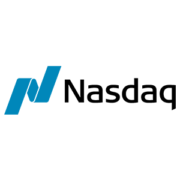Plane Advantage: Pilot Problems
By Dale Buss
December 26, 2019
What the looming pilot shortage means for private aviation.
Business aviation is playing a game of musical chairs these days, as an unprecedented shortage of pilots raises the specter of a CEO showing up on a tarmac somewhere only to find an empty cockpit in the company plane.
“We haven’t gotten to the point that an aircraft is just sitting somewhere— yet,” says David Lamb, COO of Clay Lacy Aviation, an aircraft-management company. “But it’s getting tough.”
Sean Lancaster says pilot scarcity is “fortunately and by design somewhat invisible” to his clients, who are Fortune 500 CEOs, company owners and other high-net-worth individuals, “because they just get on the plane and get up and go. But operationally, for the people who work for them, it’s a real problem,” says the vice president of plane broker Bristol Associates.
Indeed, a historic pilot shortage has become a huge drag on the corporate- aviation industry, as company flight departments, charter services and fractional outfits absorb the significantly higher costs of competing for scarce pilot talent—and pass them on to their clients.
Pilots flying an upper-market Gulfstream G650, for example, now can command nearly $300,000 in compensation, about double the pay of five years ago, some experts say. Flexjet, a fractional-jet leader, boosted its compensation for second-in-command pilots by 25 percent, to about $100,000, this year.
“You can get what you want, but you’re going to pay for what you get,” says Roger Pierce, a veteran pilot and corporate-aviation director. “People with really solid experience and good reputations in the business are just being able to demand more.”
The severe pilot shortage stems from several factors that have snowballed over time. Persistent pilot deficits within the U.S. Air Force and Navy have meant many fewer pilots exiting the American armed forces, traditionally a huge source for commercial and corporate aviation; and the boom in pilot training now is in military drones, not manned aircraft. The Federal Aviation Administration stiffened pilot-licensing requirements after a 2009 commuter jet crash in Buffalo that killed 50 people.
Retiring Wings
Meanwhile, about 42 percent of all active airline pilots, or approximately 22,000, will retire over the next decade, one industry survey says, with a new mandatory retirement age of 65, imposed by the federal government several years ago, looming as a main culprit. But growth in aviation will require 20,000 extra pilots a year for the next decade, Boeing estimates.
So airlines are getting more aggressive about recruiting, which puts a particular squeeze on business aviation. “It’s hard for pilots to justify not going for more time off, a schedule and more money, with an airline, and it’s a hard thing for a corporate operator to compete with,” says Sheryl Barden, CEO of Aviation Personnel International.
To make sure they and their clients aren’t losers in this game of high-flying musical chairs, business-aviation players are fighting back in these ways:
Treating them better: Increasing compensation is a huge part of that. Pilot salaries in corporate aviation have increased by 20 percent to more than 100 percent, Barden says. Charter company Clay Lacy, for example, just launched a three-pronged program that includes higher salaries, an explicit career ladder and enhanced benefits that include what Lamb calls “zero-deductible, almost no-cost medical” insurance, and likely will add a deferred-compensation option as a sort of retirement benefit.
Wanting to coddle pilots was one big reason Flexjet encouraged its ranks to decertify the Teamsters union in 2018. “Now we have a direct relationship with our pilots,” says Flexjet COO Megan Wolf. “So if they want different materials for their uniform shirts or invite us to consider a new hotel in a destination city, we can make those changes quickly.”
Flipping the script: To the right audience, business aviation can make its own strong case for the lifestyle of its pilots, highlighting the clear benefits of being a business pilot over the more strait-jacketed, routinized life of a union-represented airline pilot.
“You’re more in control of things as a crew member and control your schedule to a certain degree,” says Janine Iannarelli, president of plane broker Par Avion Ltd. “And if you’re flying to California from the East Coast, once you get there, your time is yours. Business aviation is more flexible for the pilot.”
Flexjet keeps adding new second- and third-tier airports as home bases, such as Savannah, Georgia, and Tulsa, Oklahoma, “so that our pilots don’t have to live near a hub airport as they would with a commercial carrier,” explains Wolf.
Expanding the pool: The National Business Aviation Association and other corporate-aviation groups are getting more proactive about promoting their careers in schools. More aviation companies are testing ways to help would-be pilots afford aviation school, where they can run into big debt burdens such as those experienced by college students. “It’s difficult to go and get student loans and come out a pilot,” says Craig Picken, managing partner of NorthStar Group, an aviation-recruitment outfit.
Business aviation needs to recruit more women to become pilots as well, says Joseph Smith, director of the aviation-services division of investment bank Cassel Salpeter. “Right now, they make up only three to five percent of the pilot population,” he says.
Some in the industry are also pushing to raise the mandatory federal airline pilot retirement age to 68. “People can fly safely at that age if they’ve taken care of themselves, especially if you’ve got a more senior and a junior pilot in the cockpit together,” Barden says. “If we could stave off or slow down forced retirements by just a couple of years it would take some of the pressure off.”
Reducing the need: The aviation industry and regulators are discussing the greater possibility of single-pilot certification only for cargo flights, which would reduce pilot demand. And, of course, the high degree of automation already employed in flying aircraft suggests a future in which artificial intelligence and robotics enable airplanes that operate entirely autonomously.
“Planes could fly themselves already; it’s probably more feasibly now than with automobiles,” Lancaster says. “But will people ride in the back? That’s the question.”
Enhancing the role: More companies are highlighting the importance of the pilot’s role in business aviation, especially that of the chief pilot who administers a single aircraft or a handful. “They’re the pilot of a special purpose-built small jet that helps world leaders move around, giving them a sense of ownership and pride, versus ‘driving the bus’ for an airline,” Ianarelli says. “And crew members generally develop close relationships with the people and companies they work for. You have to like who’s flying you, and who’s flying has to like you.”
Some pilots are being brought strategically into areas such as business-travel planning, maintenance, security and other aspects of ensuring that their precious human cargo travels safely.
“They’re like an executive chef; chief pilots aren’t people who just cook anymore,” says Pawel Chudzicki, aviation lead for the Miller Canfield law firm.
A Business Asset
Partly because of this evolving role, more companies are “looking at the flight department as a major HR piece and want to attract pilots who mesh well with executives,” Picken says. “They’re not looked at as just a commodity but as a highly-skilled and highly trained asset to the company.” Pilots can be promoted to positions such as director of aviation to oversee an entire department.
More companies are taking advantage of the certified aviation manager designation course offered by the NBAA, whose enrollment is growing every year and which has trained more than 500 people since its launch in 2014, according to the Washington, D.C.-based group. The curriculum credits pilot candidates for experience and prepares them for jobs as flight-department directors and managers.
“When you think about ultra-high-net-worth individuals who now have dedicated their lives to improving the world, they depend on their pilots,” Barden says. “That’s a great job compared with following the American Airlines flight plan every day from Chicago to Newark. You’re making a lot of decisions about travel and problem-solving, and you’re in charge of a $70 million aircraft.”
Click here to read the PDF.









